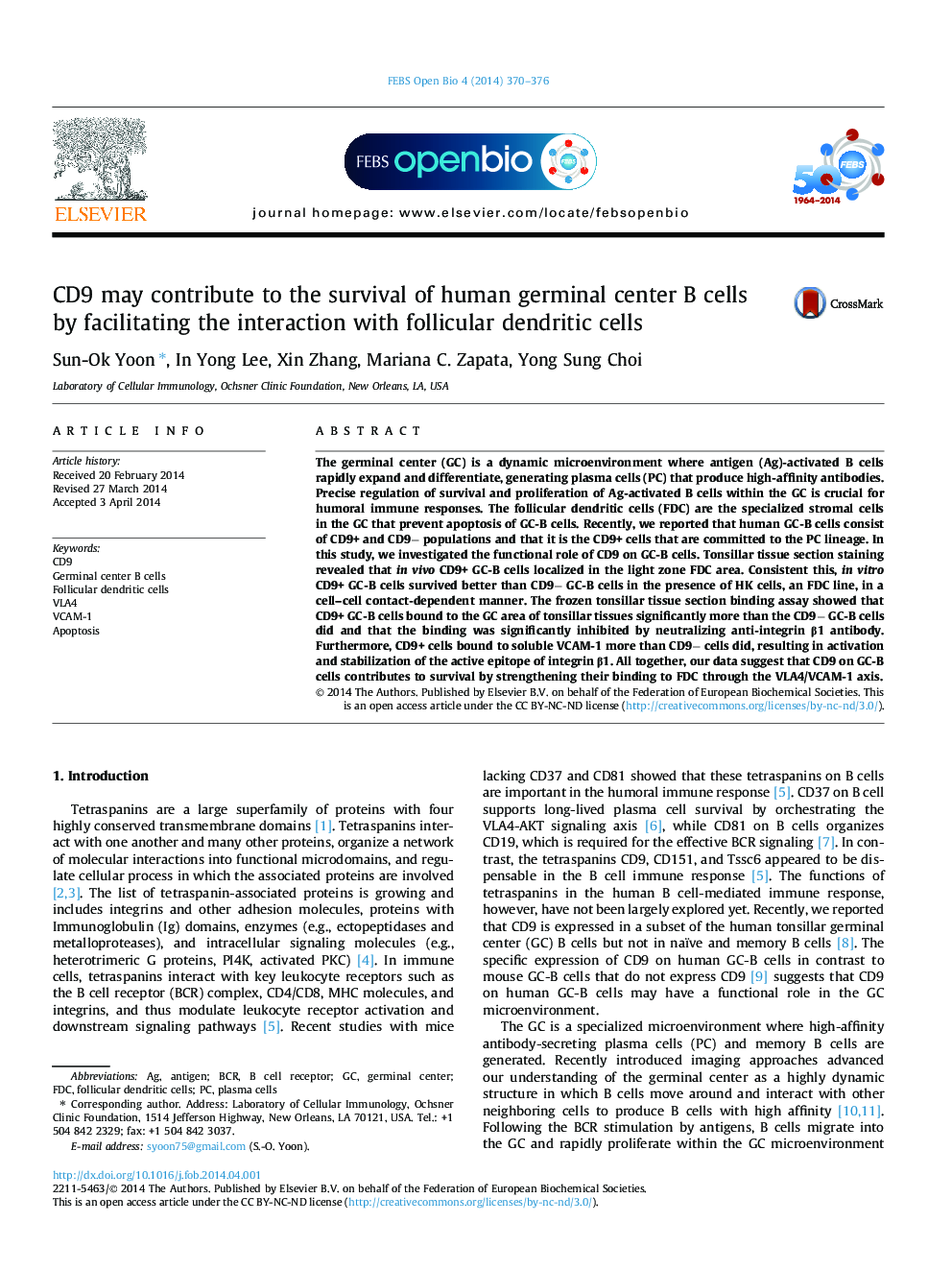| Article ID | Journal | Published Year | Pages | File Type |
|---|---|---|---|---|
| 1981698 | FEBS Open Bio | 2014 | 7 Pages |
•CD9+ germinal center B cells are in close proximity to follicular dendritic cells (FDC) in vivo.•CD9 improves the survival of GC-B cells in the presence of FDC in vitro.•CD9 enhances the binding of GC-B cells to soluble VCAM-1.•CD9 on GC-B cells may have a role in enhancing the affinity of VLA4 to VCAM-1 on FDC.
The germinal center (GC) is a dynamic microenvironment where antigen (Ag)-activated B cells rapidly expand and differentiate, generating plasma cells (PC) that produce high-affinity antibodies. Precise regulation of survival and proliferation of Ag-activated B cells within the GC is crucial for humoral immune responses. The follicular dendritic cells (FDC) are the specialized stromal cells in the GC that prevent apoptosis of GC-B cells. Recently, we reported that human GC-B cells consist of CD9+ and CD9− populations and that it is the CD9+ cells that are committed to the PC lineage. In this study, we investigated the functional role of CD9 on GC-B cells. Tonsillar tissue section staining revealed that in vivo CD9+ GC-B cells localized in the light zone FDC area. Consistent this, in vitro CD9+ GC-B cells survived better than CD9− GC-B cells in the presence of HK cells, an FDC line, in a cell–cell contact-dependent manner. The frozen tonsillar tissue section binding assay showed that CD9+ GC-B cells bound to the GC area of tonsillar tissues significantly more than the CD9− GC-B cells did and that the binding was significantly inhibited by neutralizing anti-integrin β1 antibody. Furthermore, CD9+ cells bound to soluble VCAM-1 more than CD9− cells did, resulting in activation and stabilization of the active epitope of integrin β1. All together, our data suggest that CD9 on GC-B cells contributes to survival by strengthening their binding to FDC through the VLA4/VCAM-1 axis.
